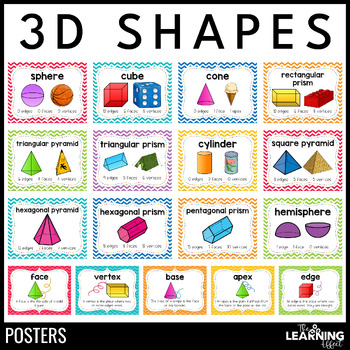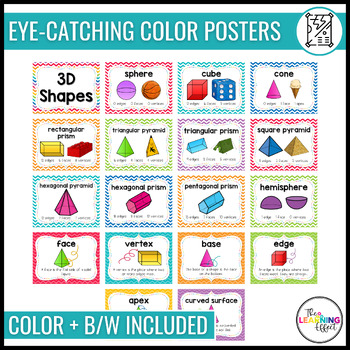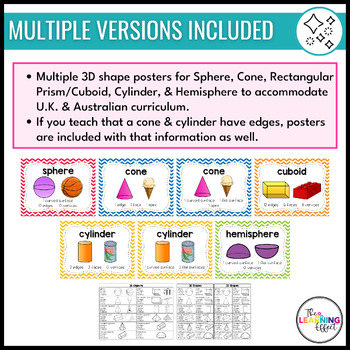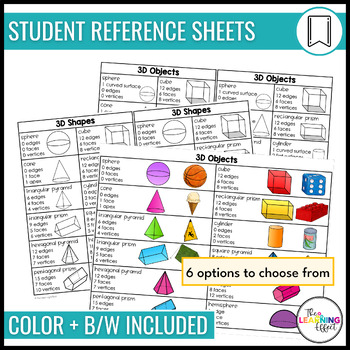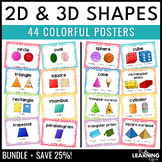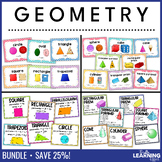3D Shapes Attributes Posters | Geometry Vocabulary Anchor Charts
- PDF
What educators are saying
Also included in
- Add these brightly colored informational posters of 2D Geometric Shapes and 3D Geometric Shapes to your math resources. Simply print, laminate, and hang in your classroom! Save 25% by purchasing 2D Shape Posters and 3D Shape Posters in this discounted bundle!➊ 2D SHAPE POSTERSTeaching 2D geometric sPrice $5.75Original Price $7.75Save $2.00
- Help your students learn all about geometry with these colorful posters. This bundle includes posters for 2D shapes, 3D shapes, perimeter, area, circumference, volume, and surface area. There is also a FREE 3D Shape Nets printable included.Save 25% by purchasing five geometry resources in this discoPrice $11.75Original Price $15.75Save $4.00
Description
Teaching 3D geometric shapes with visuals and vocabulary will help your students understand and remember the parts of each shape. Each poster features a 3D model, a 3D real-life example (where applicable), and the number of edges, faces, and vertices the shape has. Vocabulary posters give a definition with a model example to show where the term is located on a 3D shape.
⭐ BUNDLE & SAVE ⭐
Save 25% by purchasing this resource in a bundle with 2D Shape Posters
THIS RESOURCE INCLUDES
- 28 colorful posters, including:
- 3D Shapes, 3D Objects, 3D Figures headers
- Shapes:
- Sphere
- Cube
- Cone
- Rectangular prism/Cuboid
- Triangular pyramid
- Cylinder
- Triangular prism
- Square pyramid
- Hexagonal pyramid
- Hexagonal prism
- Pentagonal prism
- Hemisphere
- Definitions:
- Face
- Vertex
- Base
- Edge
- Apex
- Curved surface
- Black/white ink-saving version
- Printable student reference sheet for notebooks or studying - 6 options to choose from (prints one or two per page)
- Some pages have more than one version to accommodate U.K. and Australian curriculum. If you teach that a cone and cylinder have edges, posters are included with that information as well.
INCLUDED FILE FORMAT
- PDF: This resource requires Adobe Reader (free software). The contents may not show correctly if using other PDF software.
PLEASE NOTE
⚠️ The PDF is NOT editable in any way, and you will not be able to manipulate the content inside.
CLICK HERE to follow The Learning Effect and be the first to know when NEW resources are added to my store!
New resources are always discounted for the first 48 hours.
CONNECT WITH ME
The Learning Effect Blog • Instagram • Facebook • Email Sign Up
Please ask ALL questions before purchasing.
© The Learning Effect, LLC | Tiffany Schmidt
All rights reserved by author.
Permission to copy for single classroom use only.
Please purchase additional licenses at a discounted rate for additional users.
Intended for classroom and personal use only.

